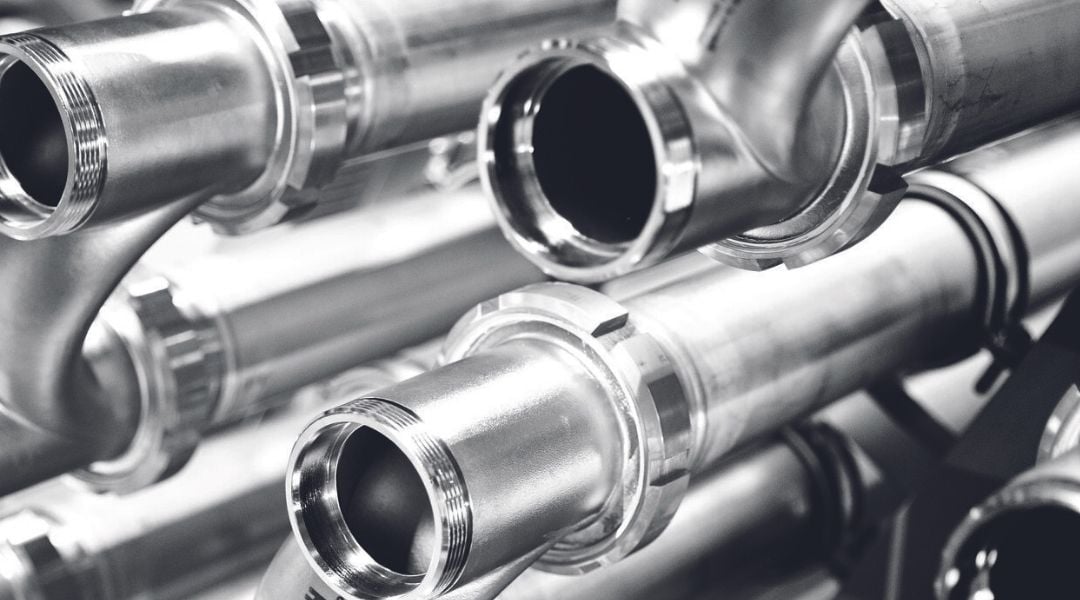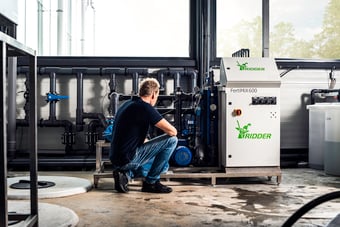In order to reuse water in a greenhouse, micro-organisms such as bacteria, fungi and viruses first need to be removed from the drain water. UV light is a common and very effective method of disinfecting drain water. Growers, however, still have a lot of questions about the principles of water treatment using UV light and how effective it is. In this blog, we list 10 facts about UV disinfection to shed some light on this treatment method.
1. InactivationUV light inactivates bacteria, fungi, and viruses, by damaging and breaking down their genetic material. This does not, however, completely remove the micro-organisms straight away. Instead, UV radiation damages the genetic material to the point that these micro-organisms are no longer harmful and able to function or reproduce. As a result, the micro-organisms will quickly die.
2. 254 nanometers
There are different types of UV light, each with its own wavelength. UV-C is needed to disinfect water. UV-C, with a wavelength of 254 nanometers, has the strongest germicidal effect and thus eliminates micro-organisms in water. This enables the water to be reused in the greenhouse.
3. Correct UV dose for water disinfection
A UV dose of 250 mJ/cm2 is required to neutralize waterborne viruses. An exception is the Pepino mosaic virus, which only needs 150 mJ/cm2. If you want to neutralize fungi and bacteria only, a UV dose of 100 mJ/cm2 is sufficient. The required dose can be set in the configuration of your disinfection unit, such as the Ridder VitaLite.
4. Germ count determination
To verify the effectiveness of the disinfection process, you can get the water tested. Take samples using the taps on your UV disinfection unit (one before UV treatment and one after UV treatment) and ask a laboratory to do a germ count. This indicates how many active fungi and bacteria are still in the water and therefore how effective the disinfection process is. Make sure that the laboratory does not (only) perform a DNA analysis. This only shows whether microorganisms have been present in the water but does not indicate whether they are dead or alive. This can be misleading.
5. Bioassay
A germ count is only used to detect bacteria and fungi but does not determine whether active viruses are still present in the water. If you want to know if a virus is still present, a laboratory can perform a bioassay. During a bioassay a few plants are exposed to drain water to see how many still get infected.
6. Sampling
When taking samples of drain water, it is essential to do this carefully. Always use sterile sampling vials and disinfect the sampling tap with alcohol or a small flame. Wait until the disinfection process is active (so not when then lamps are still warming up). Then flush the tap for a few seconds before actually taking the sample. In addition, opt for refrigerated transport to the laboratory.
7. UV water disinfection is 99.9% effective
The effectiveness of UV water disinfection is 99.9%. Why is this not 100%? This is because the effectiveness is determined using a logarithmic scale (or log scale). If a certain UV dose leads to 90% (one log) reduction, then three times that UV dose will lead to 99.9% (three log) reduction. Disinfection needs to be three log reduction. Sterilization means six log reduction. For greenhouse drain water, disinfection (99.9% reduction) is sufficient to achieve the desired result.
8. Most commonly used in Europe
Research shows that disinfecting drain water using UV light is the most widely used method within horticulture in Europe. The fact that this method is so widely used underlines the reliability of UV disinfection once again. It is not a new or experimental way of disinfecting water, but a method that has been extensively tested in the field.
9. Filtration
To optimize disinfection using UV light, pre-filtration is recommended to prevent a shadow effect. Large particles in the water protect micro-organisms from the UV-light. You can prevent this by applying at least 30-micron depth filtration, for example, using a sand filter.
10. Oxidation
When you apply hydrogen peroxide just before UV disinfection it results in a process called 'advanced oxidation'. This process helps to break down the organic substances in water and reduces the formation of biofilm in the pipes. The use of hydrogen peroxide, therefore, adds to the benefit of UV disinfection.
Webinar: The Do's & Don'ts in water recirculation
Would you like to know more about UV water disinfection? Our water treatment experts have recorded a webinar called ‘The Do’s and Don’ts in Water Recirculation’. In this webinar, we show you practical tools and information for your greenhouse, such as UV disinfection. Download the webinar on-demand here.



.png?width=340&name=Landingpage%20Template%20(1).png)
